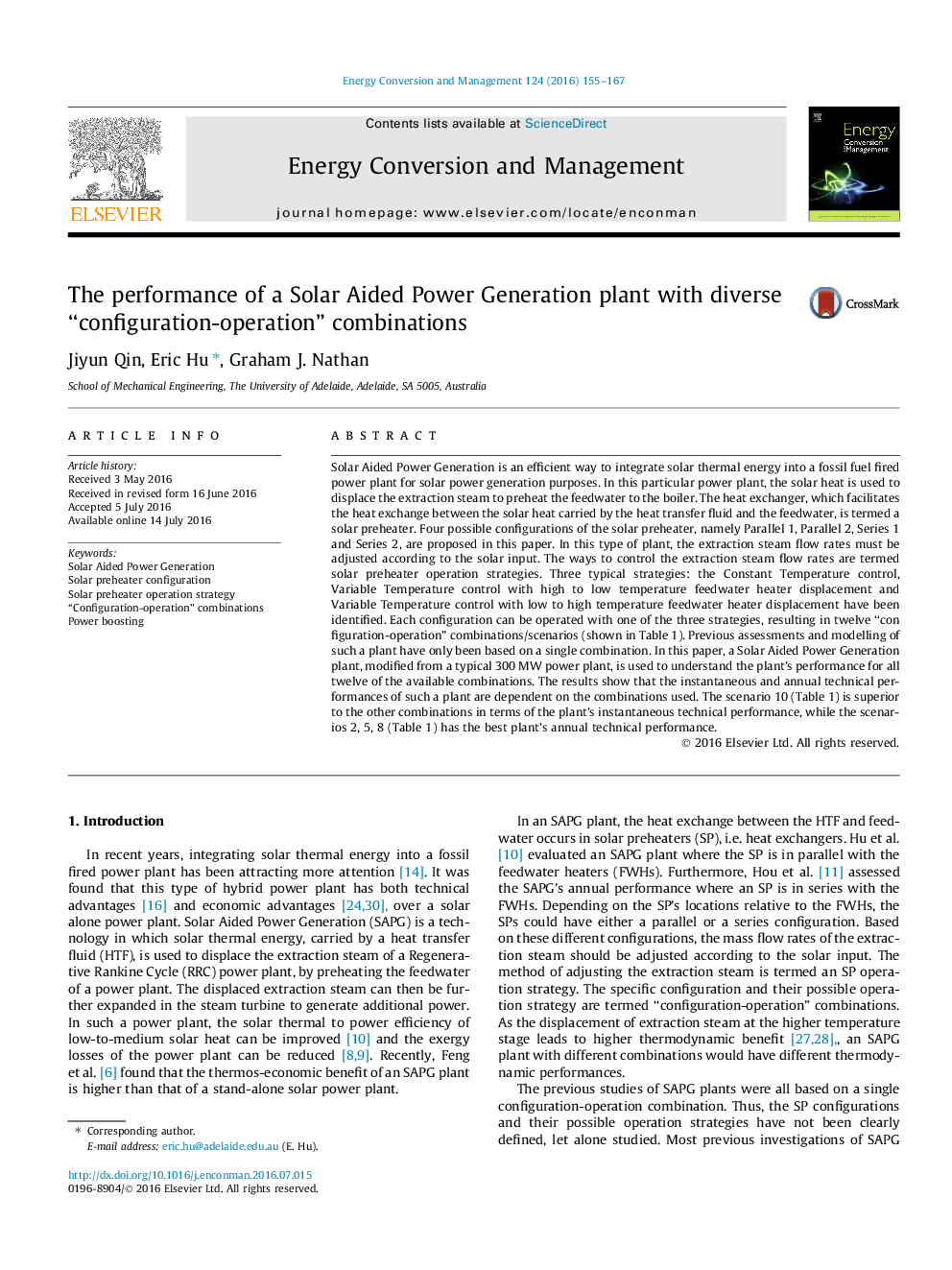| Article ID | Journal | Published Year | Pages | File Type |
|---|---|---|---|---|
| 764980 | Energy Conversion and Management | 2016 | 13 Pages |
•Four configurations of solar preheaters have been proposed.•Three typical operation strategies of solar preheaters have been identified.•12 “configuration-operation” combinations has been proposed.•There are superior combinations to achieve the highest solar thermal performance.
Solar Aided Power Generation is an efficient way to integrate solar thermal energy into a fossil fuel fired power plant for solar power generation purposes. In this particular power plant, the solar heat is used to displace the extraction steam to preheat the feedwater to the boiler. The heat exchanger, which facilitates the heat exchange between the solar heat carried by the heat transfer fluid and the feedwater, is termed a solar preheater. Four possible configurations of the solar preheater, namely Parallel 1, Parallel 2, Series 1 and Series 2, are proposed in this paper. In this type of plant, the extraction steam flow rates must be adjusted according to the solar input. The ways to control the extraction steam flow rates are termed solar preheater operation strategies. Three typical strategies: the Constant Temperature control, Variable Temperature control with high to low temperature feedwater heater displacement and Variable Temperature control with low to high temperature feedwater heater displacement have been identified. Each configuration can be operated with one of the three strategies, resulting in twelve “configuration-operation” combinations/scenarios (shown in Table 1). Previous assessments and modelling of such a plant have only been based on a single combination. In this paper, a Solar Aided Power Generation plant, modified from a typical 300 MW power plant, is used to understand the plant’s performance for all twelve of the available combinations. The results show that the instantaneous and annual technical performances of such a plant are dependent on the combinations used. The scenario 10 (Table 1) is superior to the other combinations in terms of the plant’s instantaneous technical performance, while the scenarios 2, 5, 8 (Table 1) has the best plant’s annual technical performance.
